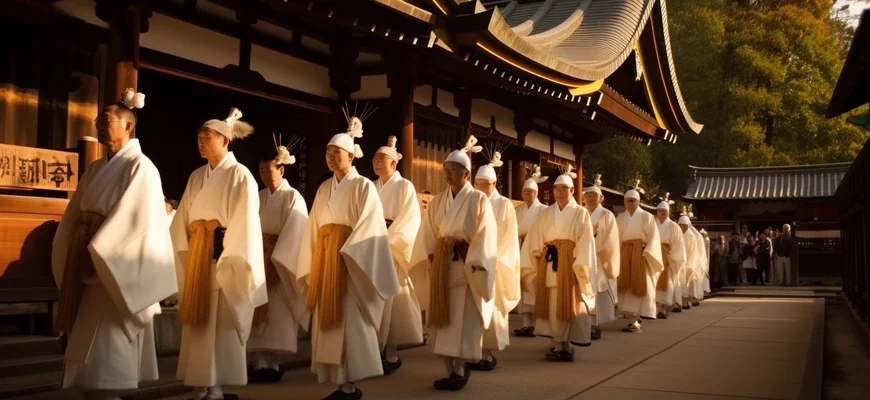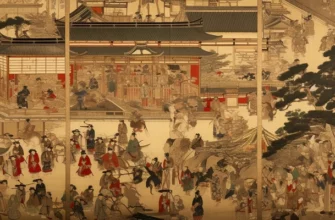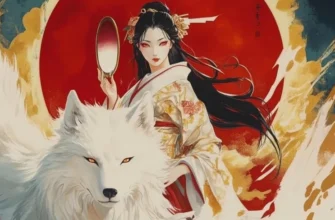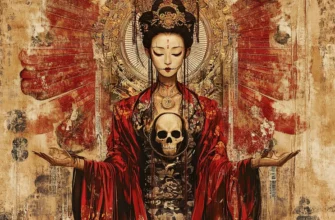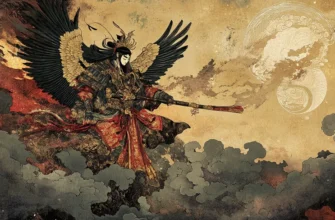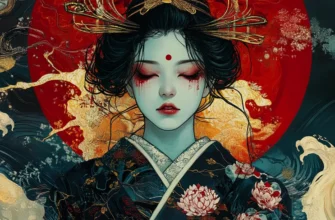Shinto is the national religion of Japan and has deep roots in its history and culture. It combines mythology, worship, and rituals that reflect the traditional Japanese view of the world and life. Shinto occupies a special place in Japanese identity and influences many aspects of Japanese life.
- History and origins of Shintoism
- Beliefs, mythology, and rituals of Shintoism
- Gods and their roles in Shintoism
- Sacred objects and places of worship in Shintoism
- Shinto rituals and ceremonies
- The influence of Shintoism on Japanese culture and society
- Contemporary Shintoism: trends and challenges
- Conclusions: Shintoism as a component of Japanese identity
History and origins of Shintoism
Shintoism has a long history linked to the ancient traditions and beliefs of Japan. Its roots date back to the Yayoi period, when belief in natural forces and spirits was widespread among the population. Shintoism later became the official religion of Japan in the 6th-7th centuries AD and was subsequently revived in the 19th century during the Meiji Restoration. Today, Shintoism is one of the largest religions in Japan with more than 100 million followers.
Beliefs, mythology, and rituals of Shintoism
The basis of Shintoism is the belief in nature spirits (kami) that reside in everything around us, from rivers and mountains to trees and stones. These spirits have a great influence on people’s lives, so numerous rituals and ceremonies are dedicated to them. Shinto mythology depicts the world as a hierarchy of deities representing various aspects of nature and human life. Shinto rituals are incorporated into the daily lives of the Japanese and are included in the celebration of holidays and various events.
Gods and their roles in Shintoism
In Shinto mythology, gods (kami) play an important role in the creation and management of the world. Each god has its own characteristics and is associated with various natural phenomena that it controls. The most important gods include Amaterasu (goddess of the sun), Susanoo (god of storms and the sea), and Tsukuyomi (goddess of the moon and grain). Gods are depicted in the form of Japanese sacred mirrors (called yari), symbols, and other objects, and are often dedicated to specific holidays and rituals.
Sacred objects and places of worship in Shintoism
Sacred objects and places of worship are of great importance in Shintoism. These include Shinto shrines (called jingū), shrines, and sacred groves. The most important Shinto shrines are located in central Tokyo and Kyoto, as well as on the island of Miyajima. These places hold a large number of sacred relics and are also of great historical and cultural significance to the Japanese people. Visiting shrines and places of worship is an important part of Japanese culture and traditions.
Shinto rituals and ceremonies
Shinto has a large number of different rituals and ceremonies that are performed in various shrines and places of worship. The most common rituals are bowing (of which there are many types), prayers, purification rites, and rituals related to natural phenomena. For example, the Hatsuka ceremony is held at the beginning of the new year and consists of visiting shrines and praying to the gods for health and prosperity in the coming year. Wedding ceremonies and funeral rites are also important rituals. Shinto rituals are of great importance to the Japanese and are considered an important part of Japanese culture and traditions.
The influence of Shintoism on Japanese culture and society
Shintoism plays an important role in Japanese culture and society. Its influence is evident in many aspects of Japanese culture, such as architecture, art, music, literature, and traditions. For example, many Shinto shrines and temples have distinctive architectural structures that have become landmarks of Japanese art. Also, the worship of many Japanese gods and heroes is reflected in Japanese literature and art.
Shintoism also influences the social and ethical norms of Japanese society. The cultural values of Shintoism, such as respect for elders and nature, are reflected in Japanese traditions and etiquette. In addition, many religious holidays and rituals of Shintoism are national holidays and are celebrated throughout Japan.
In summary, Shintoism has a significant influence on Japanese culture and society, defining many aspects of Japanese identity and traditions.
Contemporary Shintoism: trends and challenges
Contemporary Shintoism faces numerous trends and challenges. One of the main problems is the decline in interest in religion in general, including Shintoism, among the younger generation. This is causing concern among believers and raising questions about the future of this religion.
In addition, there are different schools and movements within Shintoism with different views on traditions and rituals. This can cause disputes and discussions between followers of these movements, which can lead to disharmony and divisions within the community.
There is also growing criticism of the practice of Shinto rituals and cults from the point of view of modern ethical and social norms. This can cause difficulties in preserving traditions while taking into account modern requirements.
In summary, modern Shintoism faces complex challenges related to declining interest among the younger generation, internal conflicts, and the need to adapt to changes in the modern world. However, many followers of Shintoism believe in the ability of this religion to preserve traditions and develop in accordance with modern requirements.
Conclusions: Shintoism as a component of Japanese identity
Shintoism – the religion of Japan is an important component of Japanese culture and identity. It reflects the historical, mythological, and spiritual aspects of the Japanese people, which distinguishes them from other countries in the world.
Religion plays a significant role in the daily lives of the Japanese, influencing their views, values, and mentality. Its rituals and ceremonies are not only religious but also cultural events that attract tourists from all over the world.
Shintoism has played a significant role in shaping Japanese identity, particularly through the veneration of ancestors, traditions, and nature. It is a symbol of national unity and the heir to ancient traditions that have stood the test of time and survived to this day.
Although Shintoism faces complex challenges related to the declining interest of the younger generation and the need to adapt to modern demands, it continues to maintain its significance as a religion and cultural element of the Japanese people.
